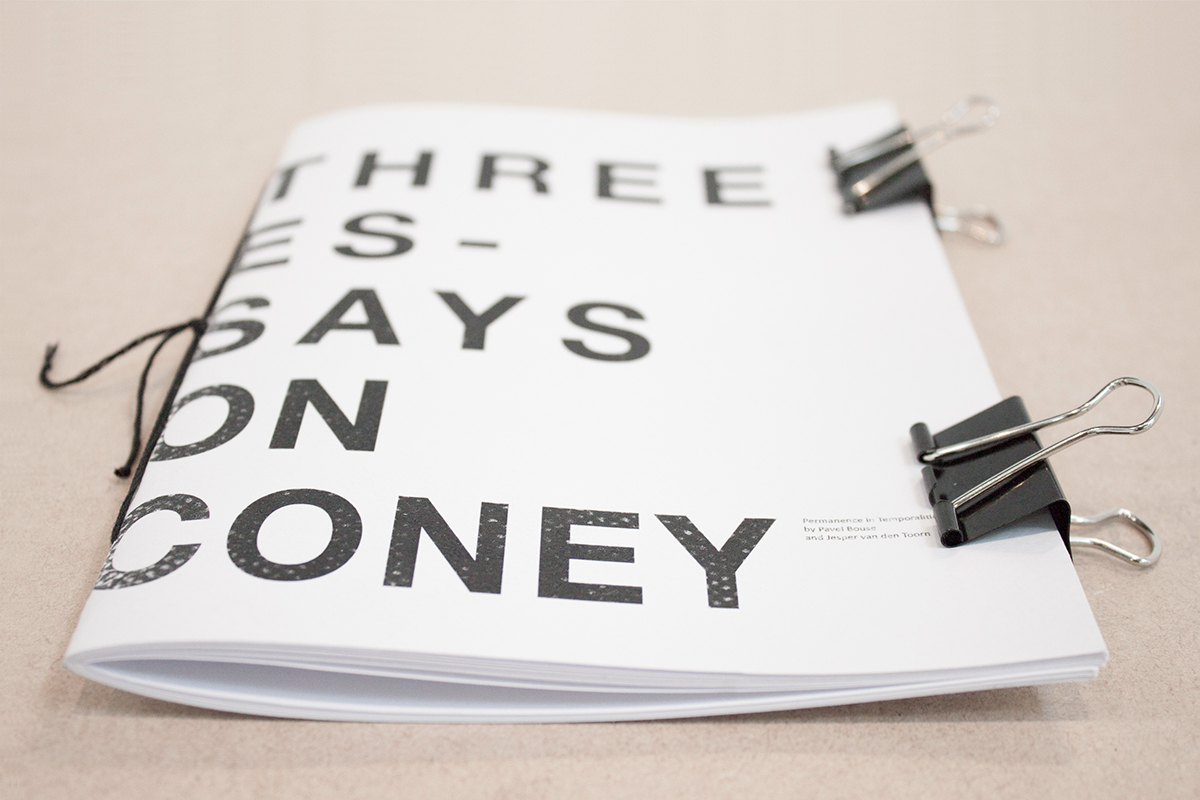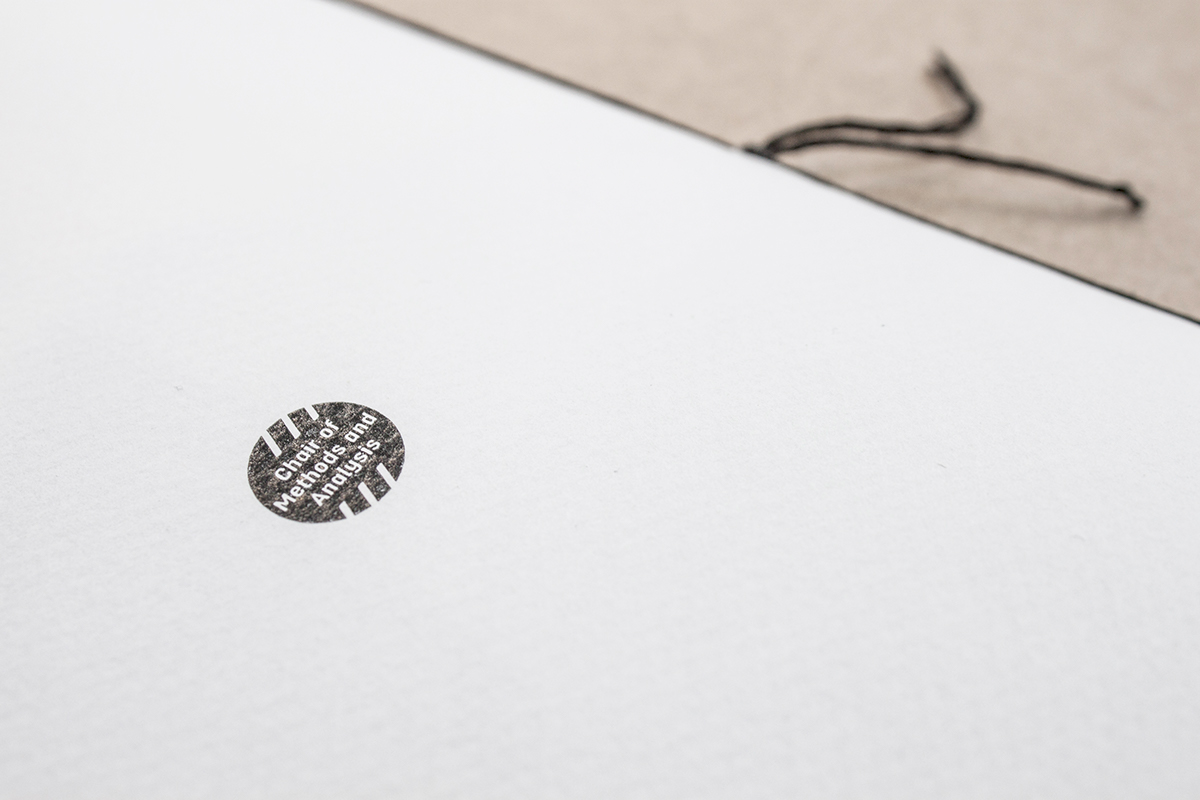Permanence in Temporalities
The mosaic of neighborhoods inhibited by low social classes are dominated by parking lots, vacant plots, and abandoned buildings. Coney Island is a place of confrontation of many different realities. Realities which any single map can hardly convey. In its semantic openness however, it is an explorative laboratory of countless commonalities.
Focusing on informal and temporal developments of the territory rather than on its formal constructions, this project discusses the notion of proto-public space whose definition can hardly be given, however, having very often public, or collective charge, they can be understood as strategically important for the neighborhood and its inhabitants. Without being necessarily part of the official maps of public spaces in Coney Island, these areas are utterly important for the daily working of local communities. Spatially non-definitive character diminishes the practice of these spaces into a form of mere processes or rather transitory events which take place under, often very specific, circumstances. Underlining their ephemeral substance; collective spaces that are not yet fully crystallized, and often only temporally used urge the development of new methods and tools of analysis and design in order to understand and address the issue of public realm in a contested area such as of Coney Island.
Focusing on informal and temporal developments of the territory rather than on its formal constructions, this project discusses the notion of proto-public space whose definition can hardly be given, however, having very often public, or collective charge, they can be understood as strategically important for the neighborhood and its inhabitants. Without being necessarily part of the official maps of public spaces in Coney Island, these areas are utterly important for the daily working of local communities. Spatially non-definitive character diminishes the practice of these spaces into a form of mere processes or rather transitory events which take place under, often very specific, circumstances. Underlining their ephemeral substance; collective spaces that are not yet fully crystallized, and often only temporally used urge the development of new methods and tools of analysis and design in order to understand and address the issue of public realm in a contested area such as of Coney Island.
Instead of simple putting things into box, while looking for these public practices and patterns in Coney Island through the lens of infrastructure, it seems more intriguing to look for a certain anchor these temporalities would have in common or share.
The elevated railway is, in a way, a finding of “permanence” within events that seem temporary or fragile. Its clear and apparently permanent presence has undoubtedly enormous influence on the everyday public practices in its nearest vicinity. Nevertheless, the permanence of the railway puts on different faces in different conditions. Conditions that reflect in the very specific spatial, social, and cultural configurations. The railway, as a common denominator in that sense, enables to realize more clearly the (non)relations between conditions which originally may have seemed incompatible.
The operative elements of Rem Koolhaas’ Fundamentals do not step into the analytical process in order to label, but rather describe and understand the meaning of the “permanence” regarding to its spatial relation. As individual elements that bridge the professional and the everyday world, their connotations exaggerate, yet with the utmost elaborative capacity to address and explore the often fickle relation between discourse and actual practice.
This project tries to outline relations the railway, as an element of infrastructure, generates, what temporal or fragile activities this structure binds, and if so, what role does it have in their practices.
The task should not be to correct the undesired or negative, or to provide them with counter-forms, but rather to try to understand their delicate nature, and eventually, to either support or suppress it with the same character of intervention, that is to say, intervention which is just as the practice tangential and weak.
The task should not be to correct the undesired or negative, or to provide them with counter-forms, but rather to try to understand their delicate nature, and eventually, to either support or suppress it with the same character of intervention, that is to say, intervention which is just as the practice tangential and weak.


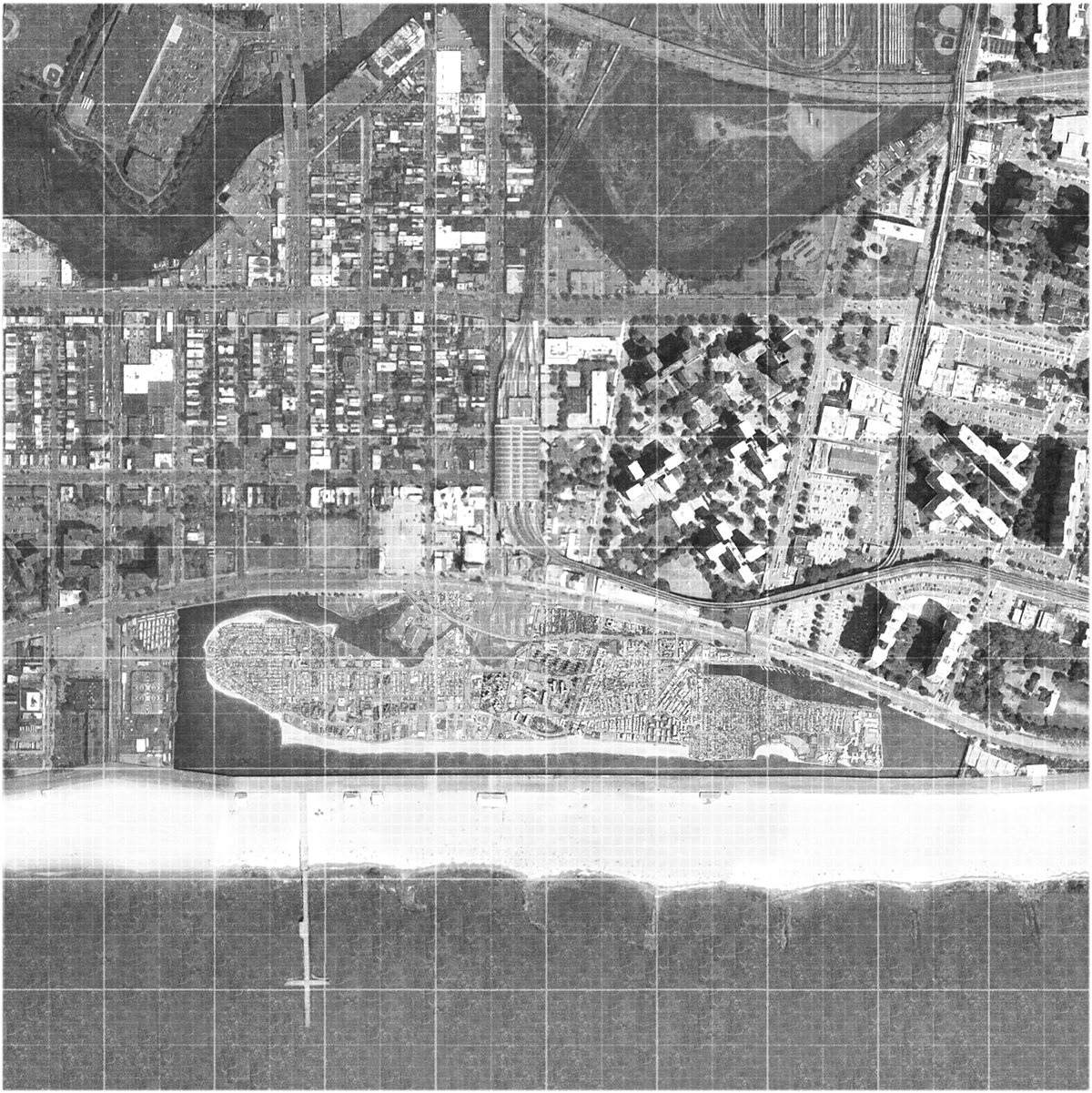

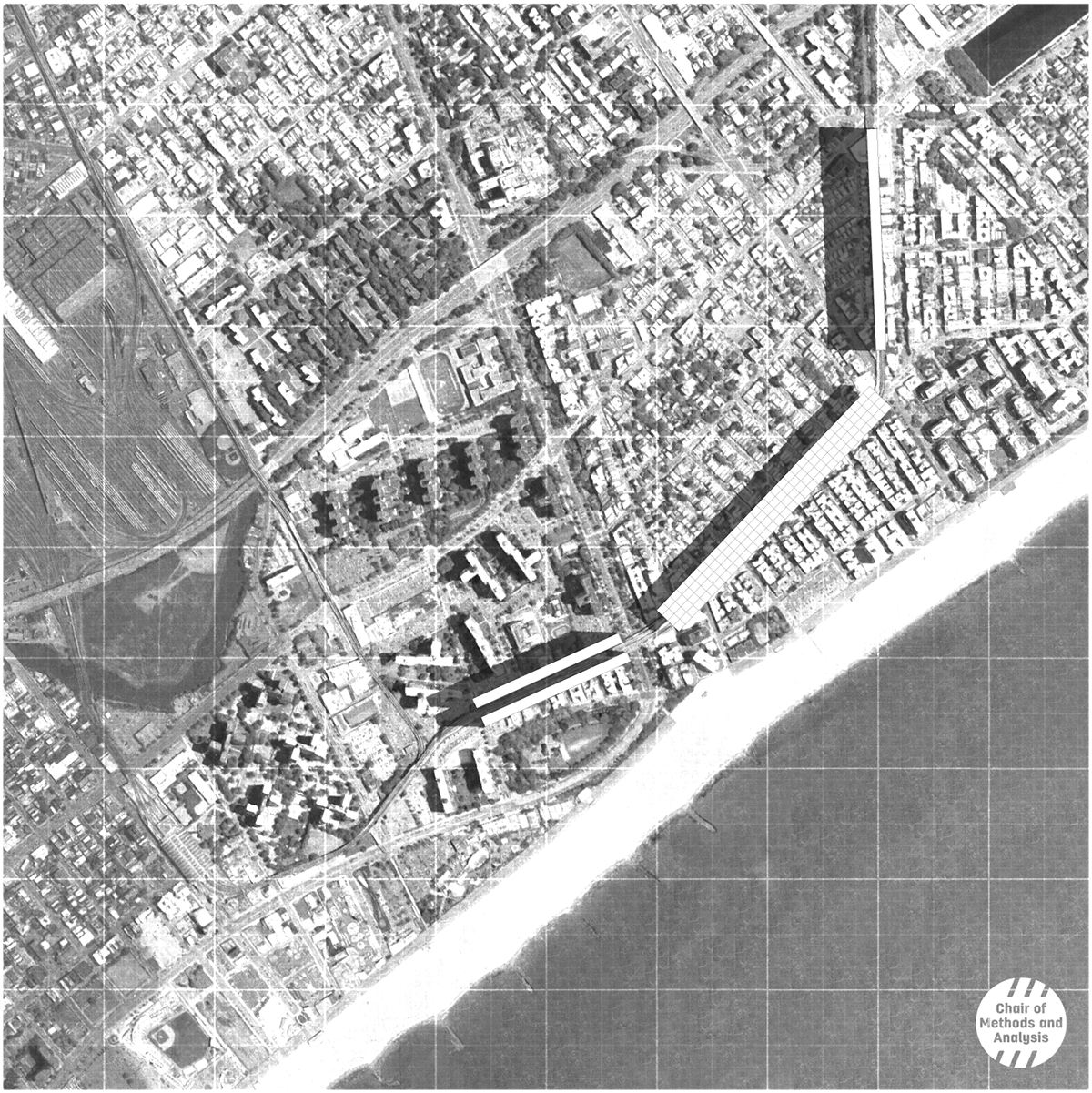
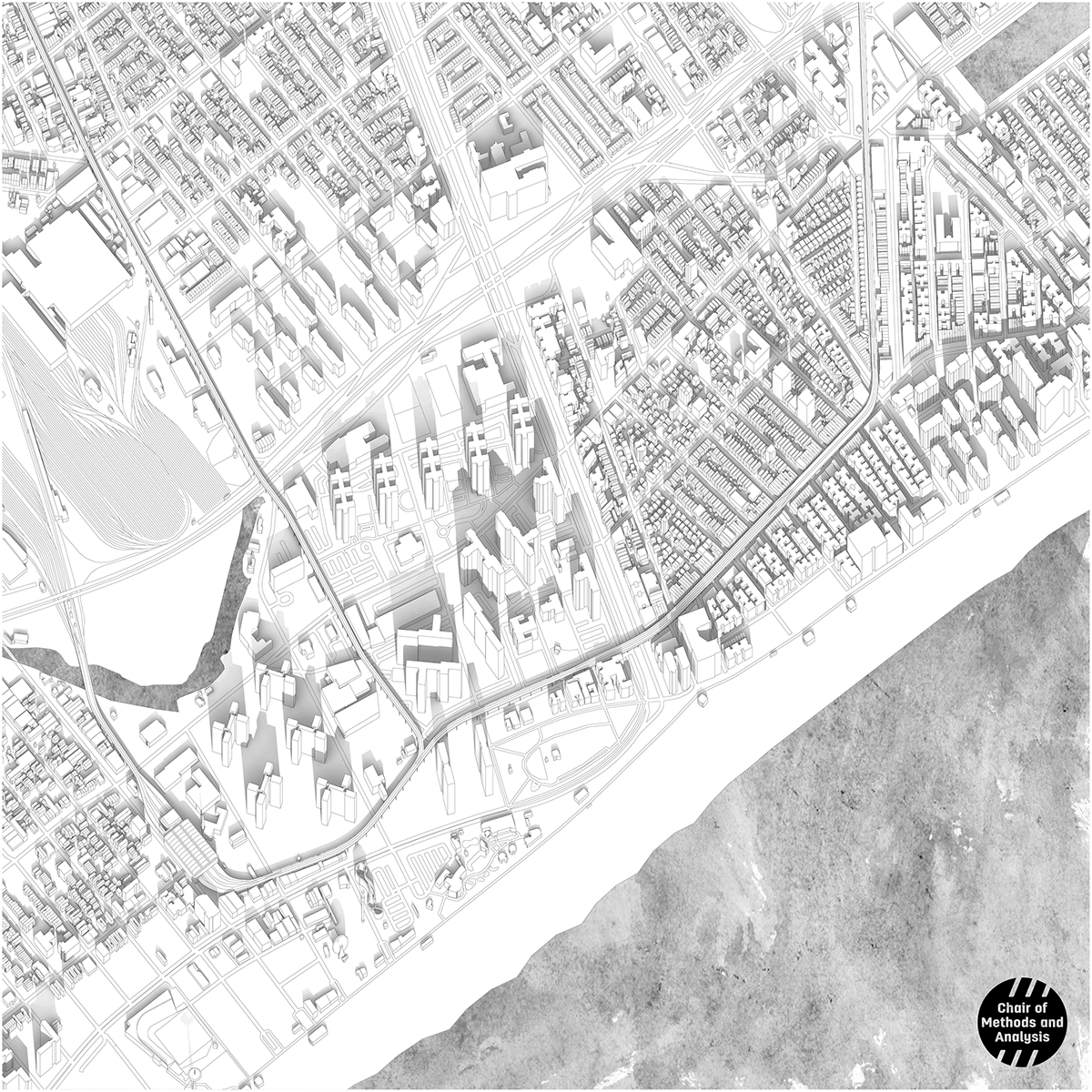

The Corridor, The Ceiling, The Wall
The Corridor
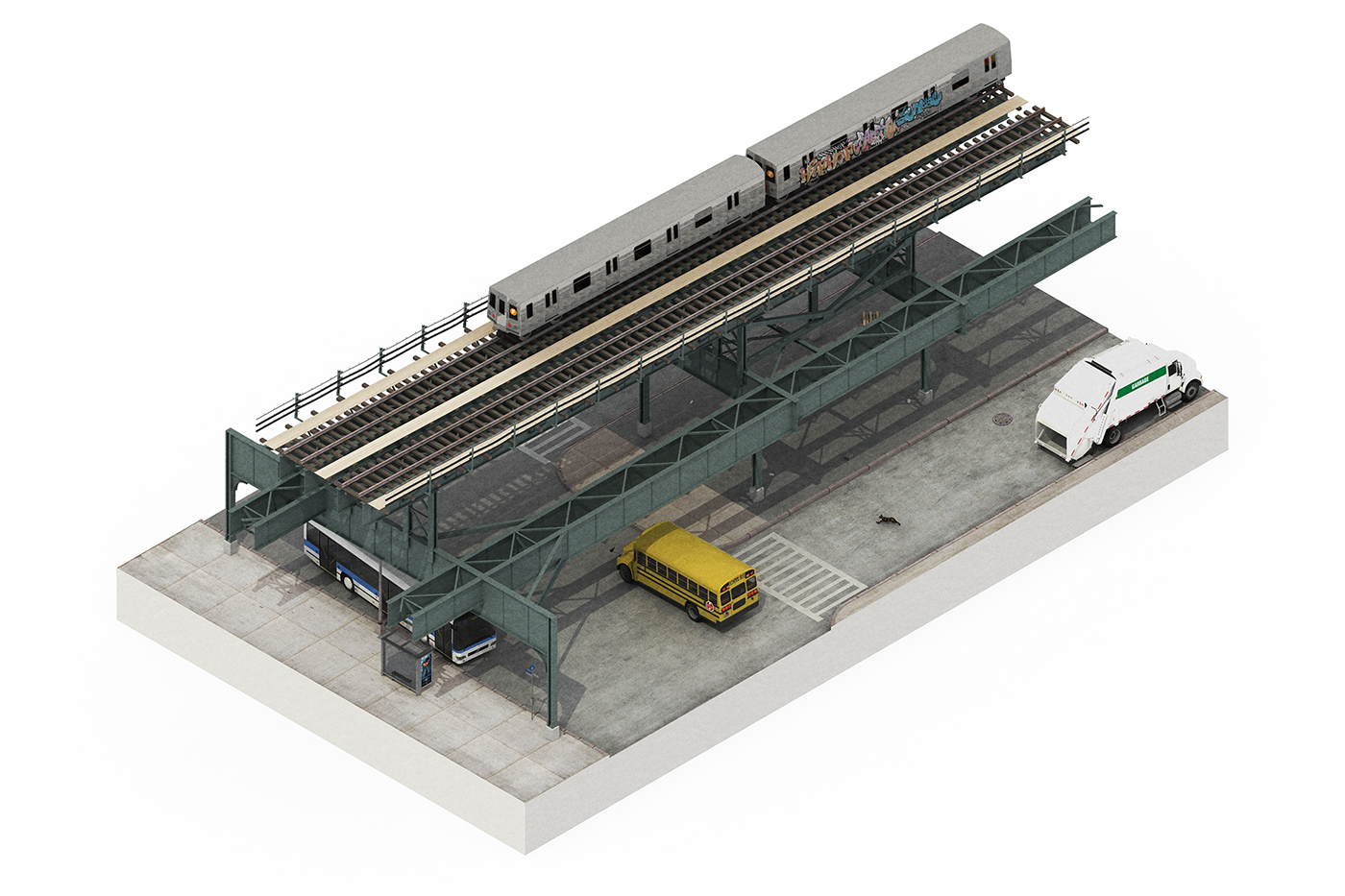
Trump Village.
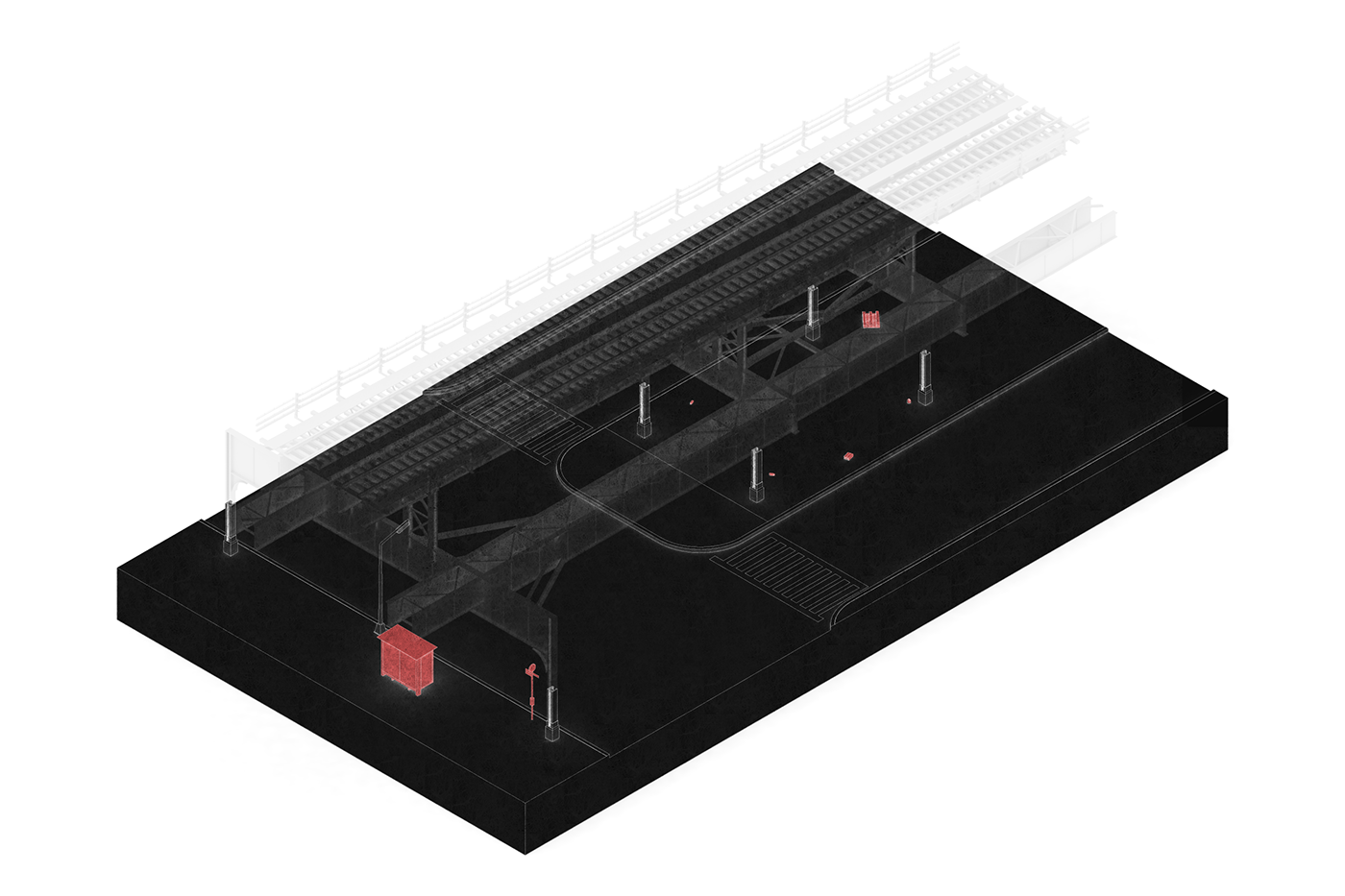
current condition.

introducing object.
The Ceiling
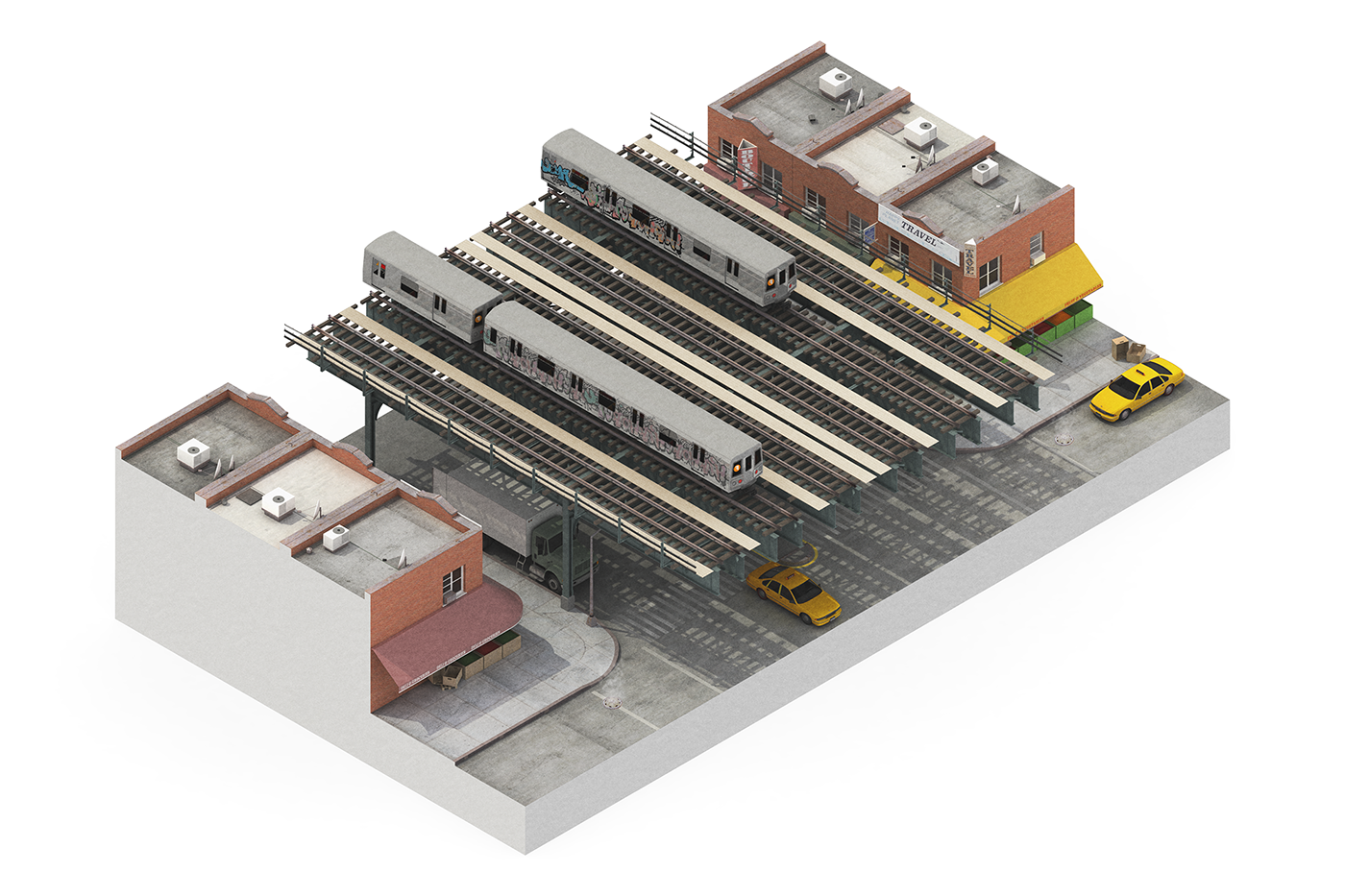
Brighton Beach Ave.
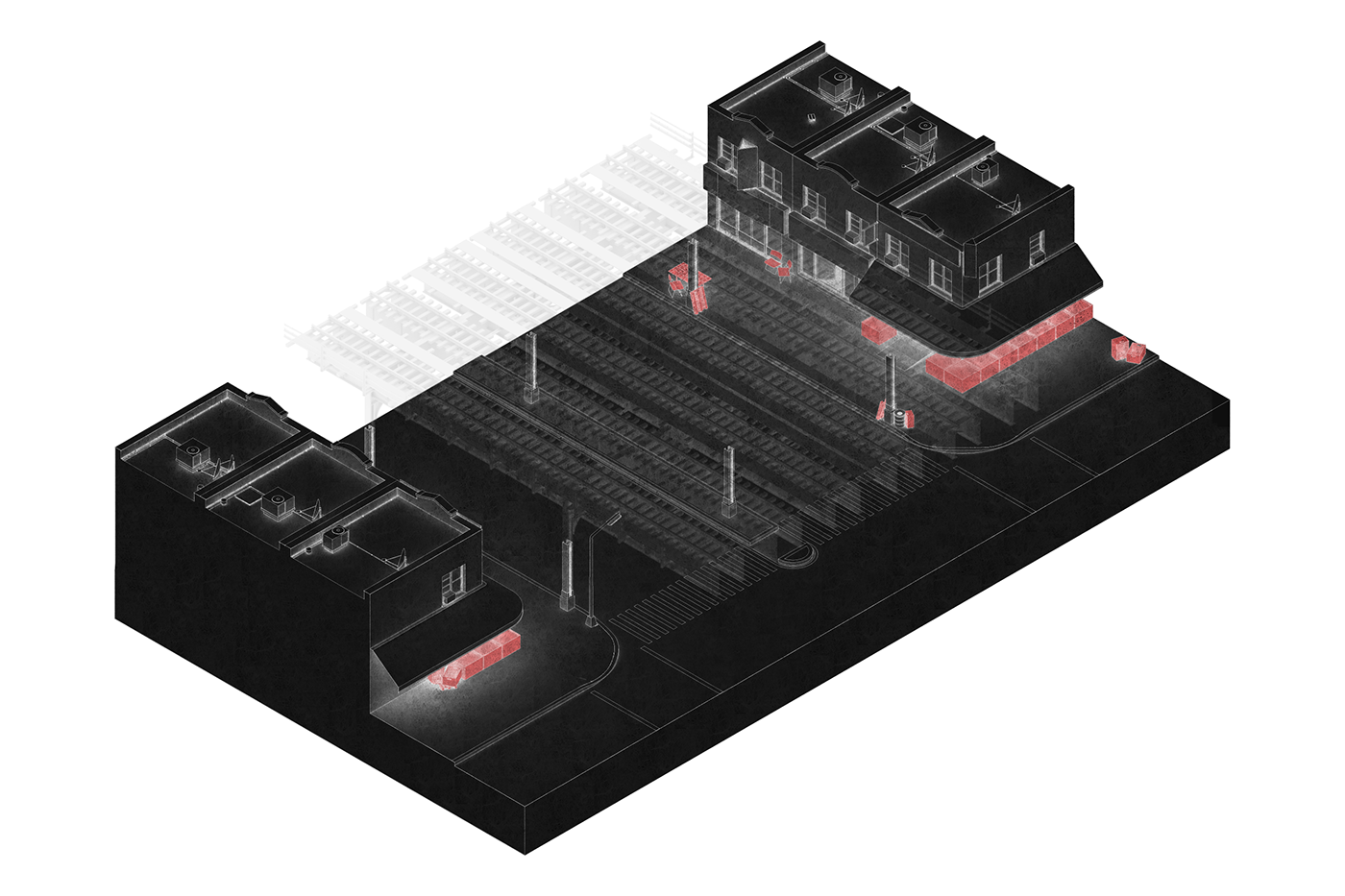
current condition.

allowing situations.
The Wall
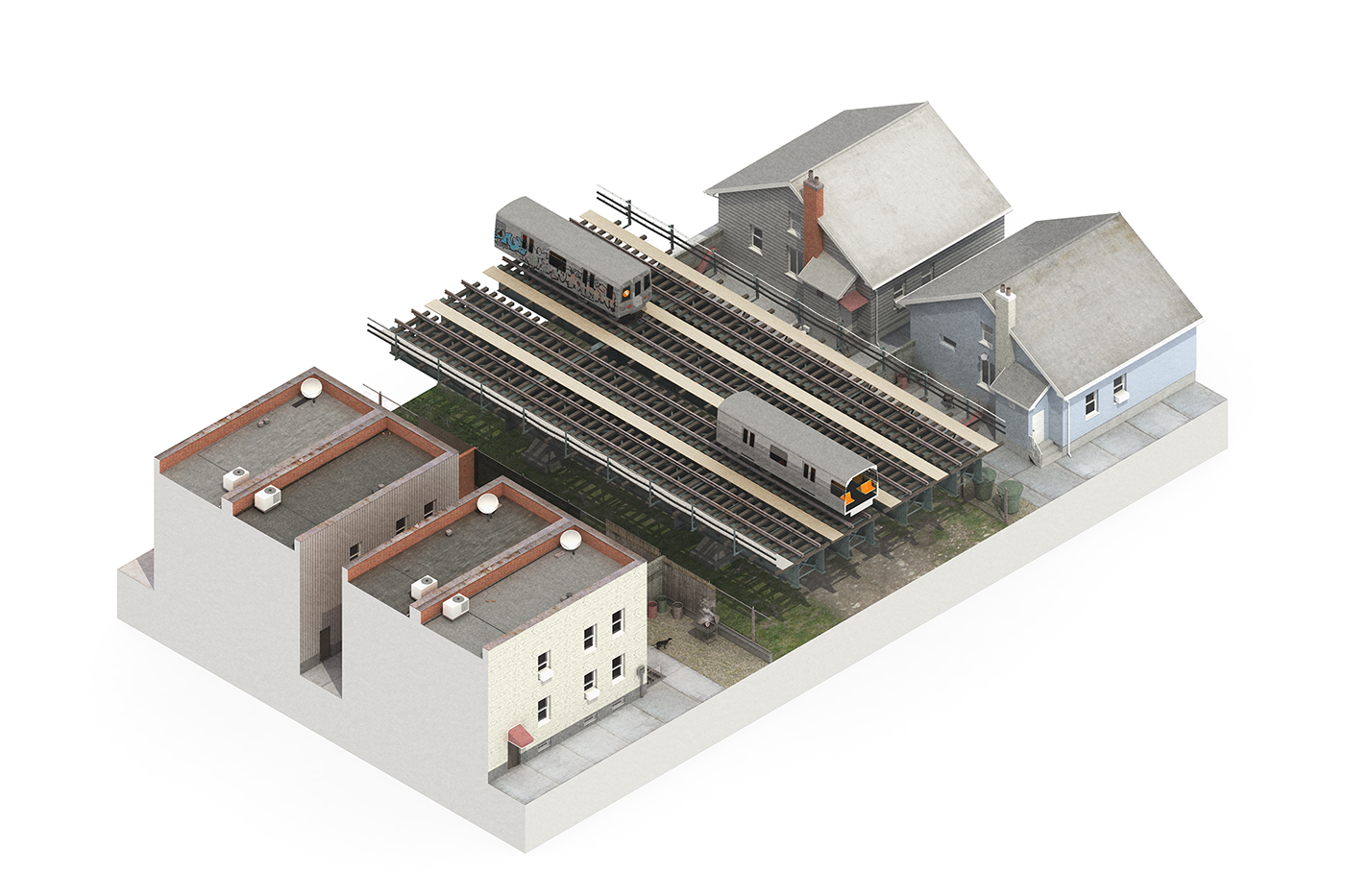
between Brighton 10th St and 11St.
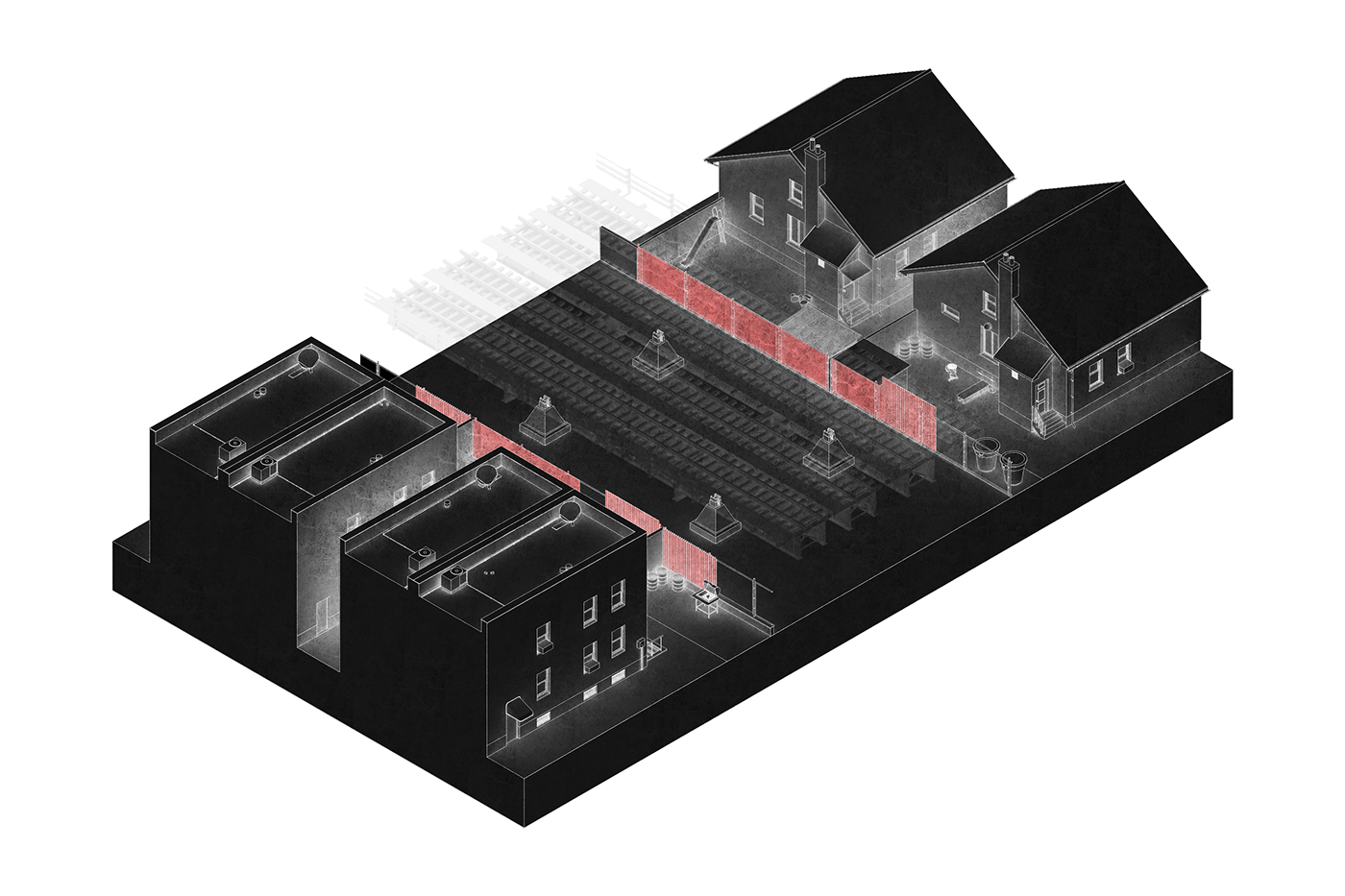
current condition.
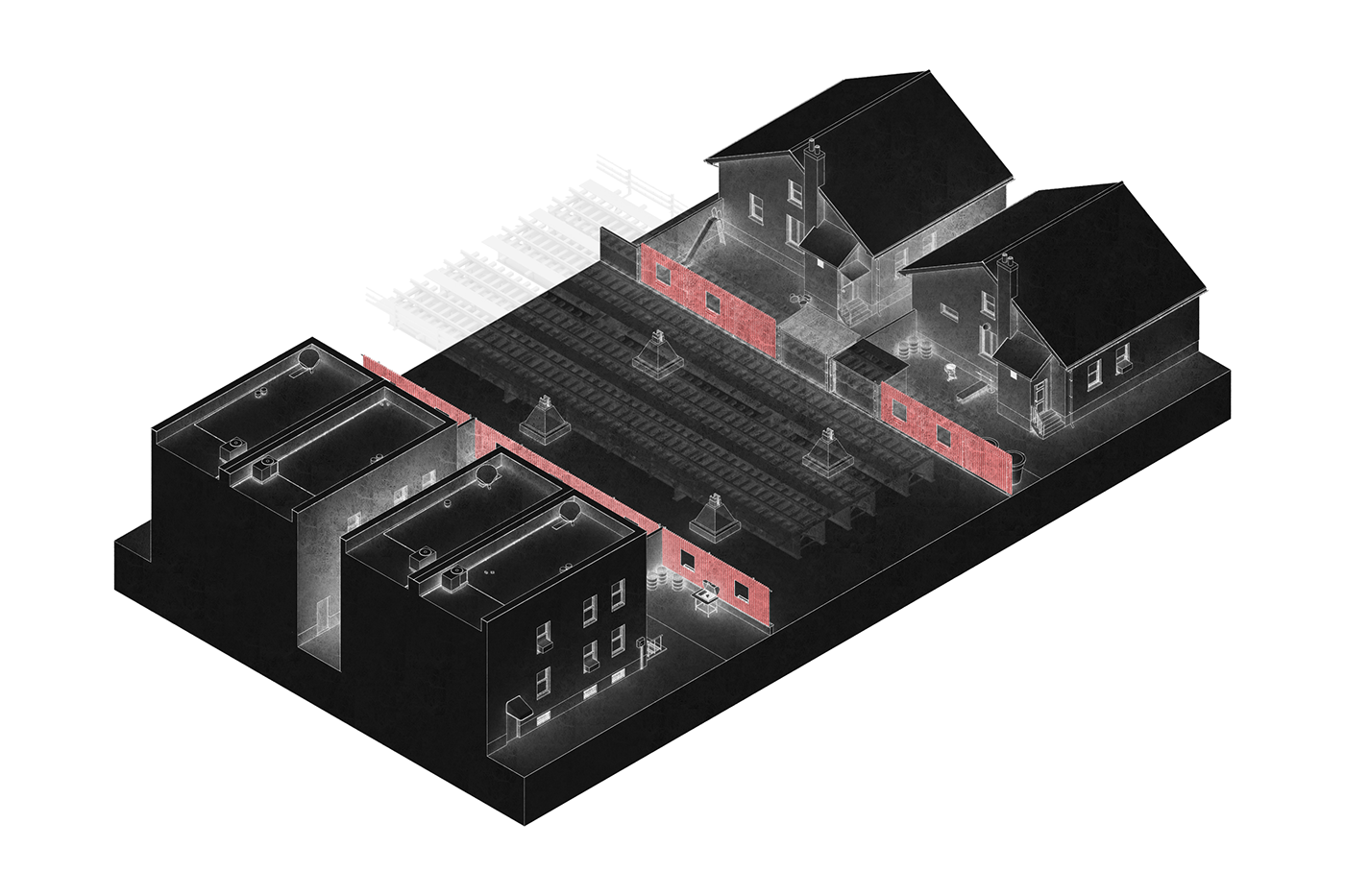
designing relation.
